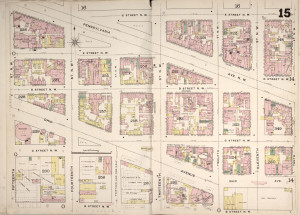Although I am aware that historical preservation costs money, I found that much of second half of the book was an attempt to give historians a financial argument as to why it could behoove someone. That being said, I find it ridiculous that people not only want, but actually expect a financial gain as a reason not to destroy historical buildings. Even my favorite part of the second half of the book, Revitalizing Downtown, felt littered with facts like “The Main Street Center recently tabulated that the program led to the rehabilitation of 60,000 buildings (instant happy thought for me, over 174,000 jobs, and to $35 for every $1 spent.” (174) Why do we still look at our collective history in dollars and cents rather than with just sense?
Page 201 clearly shows a list of an entire budget of a project, including tax benefits of doing such a rehab. To me, if you don’t want to live in a historic district ( or own a business in one), then by all means do not. If you do, I feel it ridiculous that it takes an entire spreadsheet of cost accounting to help someone determine…. what exactly? Whether or not or history has value?
The other thought that consistently came up for me was that, what about areas that are historic to a certain group of people but are overlooked by others? With the idea of a commission in charge of what is historical and what is not, what about places like Garden City, known for its beautiful gardens…. that were built and maintained by the Chinese who, as second class citizens of their time, have conveniently been written out of that narrative? Those that have power are the only ones that seemingly can tell us what has history and what does not. Only fairly recently has history started to put into the narrative the significance of many race, class, and gender in the building of America. With this in mind I would hate to lose the history of these other disenfranchised groups simply because they were disenfranchised.
